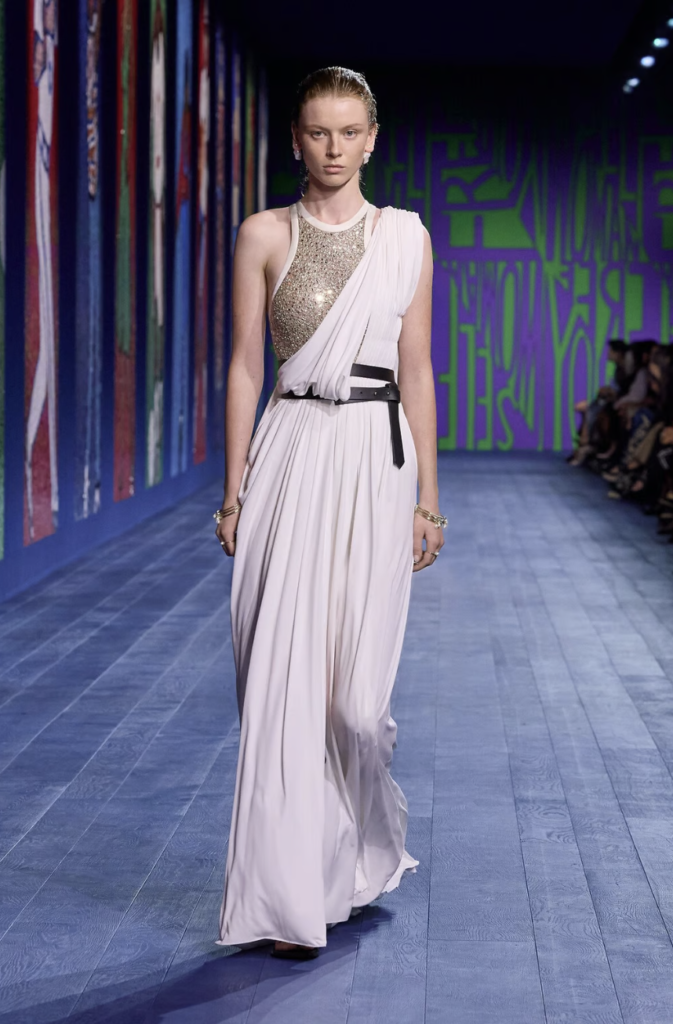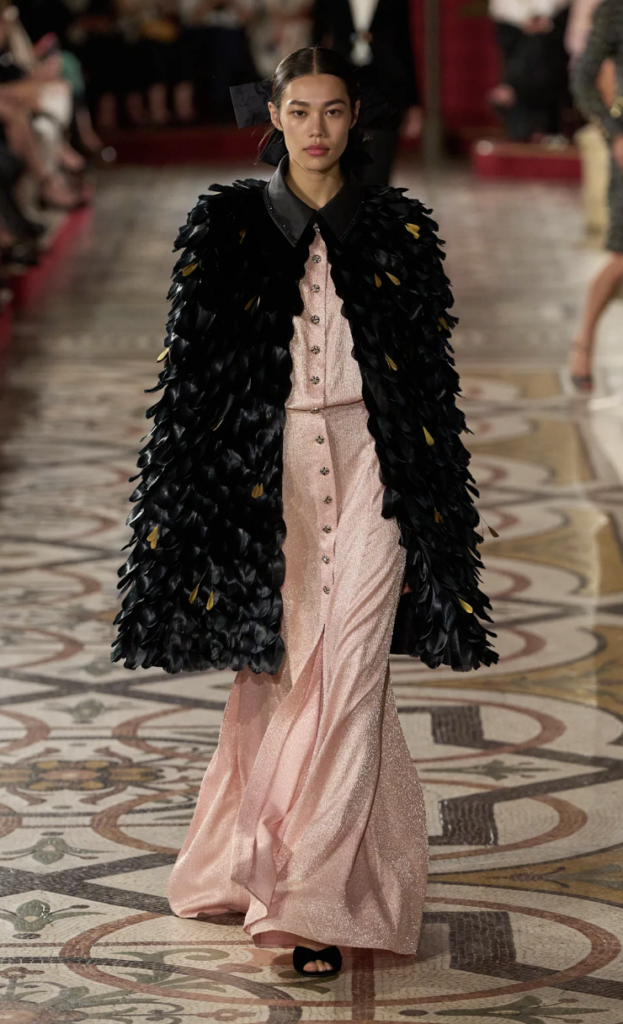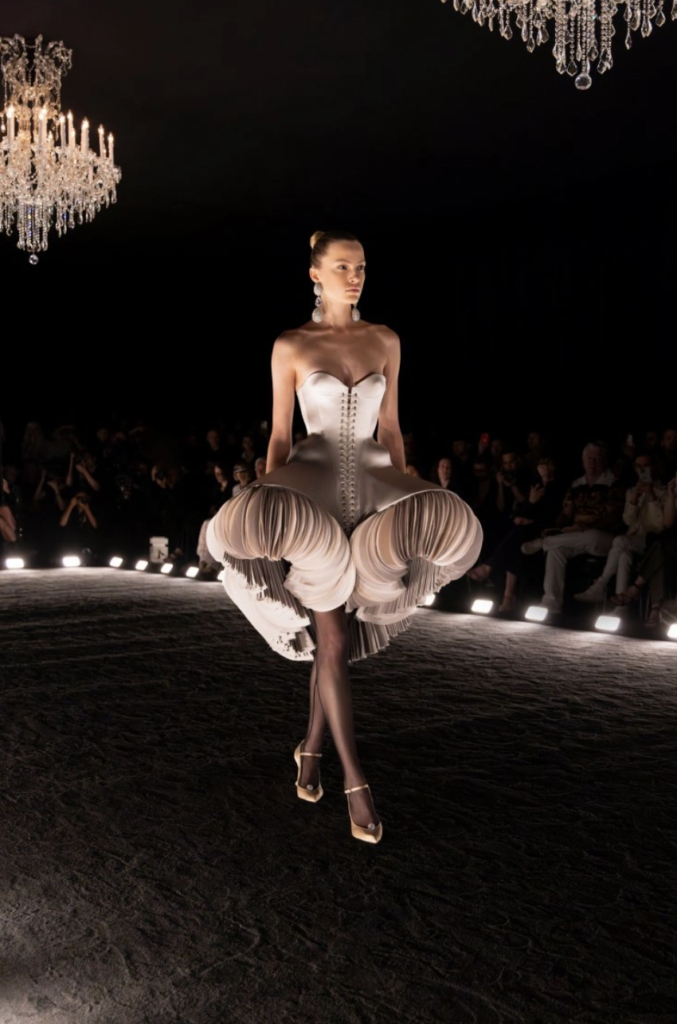It’s hard to accept that the Paris of the artists, the intellectuals, and the writers doesn’t exist anymore. The so-called Café Society made Paris a hub for creativity and a place to appreciate the luxurious aspects of life. Home to the Impressionists, the Can-Can dancers, the couturiers, and the Lost Generation, Paris’ founding myth was supported by the thriving of its social and cultural scene and the influence of its art and literature.
Today, very little remains of the Paris portrayed in Woody Allen’s film Midnight in Paris, but cafés like Les Deux Magots and Café de Flore, and cabarets like the Moulin Rouge endure as witnesses to the passing of time—places that have transitioned from cultural centers to tourist must-sees. However, one thing seems to have never disappeared and has stood the test of time: the Parisian Haute Couture industry.
Transporting us to a time of slow creation, made-to-measure pieces, and handwork, Haute Couture has remained faithful to its roots, portraying a society that valued artistry and craftsmanship over consumption. Haute Couture epitomizes the very essence of Paris and the values of art à la Parisienne, and the capital intends to preserve it for as long as possible.
The Haute Couture business was established in 1868 by Charles Frederick Worth. His eponymous couture label was based at 7 rue de la Paix in Paris, where high-society women would book appointments for their made-to-measure ensembles. However, the concept of Haute Couture dates back to the monarchy, with couturiers creating adorned and intricately constructed gowns for royalty. Rose Bertin, Marie-Antoinette’s “Minister of Fashion,” built a career by dressing the Queen in luxurious garments.
Before Ready-to-Wear, there was Haute Couture. These custom-fitted garments were reserved for a minority who could afford unique designs and high-quality materials sewn by the most skilled couturiers. Today, the principle remains the same, but the business has been structured to preserve traditional know-how, its rich heritage, and to ensure it stays rooted in Paris. Emma Gaultier, Modelist based in Paris, has worked in luxury brands such as Louis Vuitton, Chloé, Margiela, Mugler, and Haute Couture label Alexis Mabille, for her:
“It’s clear that this is part of French culture, part of the unique craftsmanship that belongs to the French. We are truly renowned worldwide for having unique skills in haute couture—techniques that are only practiced in haute couture and that are learned exclusively in Paris”.
At the heart of Paris, there is fashion, and at the very center of fashion is Haute Couture. Strongly intertwined with each other, one cannot be conceived without the other. The city is known as the capital of fashion partly thanks to the influence of Haute Couture houses, which, since the mid-20th century, have exported the French lifestyle and perspective on elegance around the globe. “The fact that it only exists in Paris is what makes it so precious. And this is why it must absolutely be preserved in Paris”, affirms Gaultier. Today, Haute Couture weeks are the most important events in the industry, gathering the most influential professionals in the capital to celebrate tradition, art, and creation.
The influence and importance held by this practice, its strong Parisian roots, and its longevity over the years are thanks to the strict requirements demanded to those who wish to benefit from the appellation. According to La Fédération de la Haute Couture et de la Mode, “since 1945, the name ‘Haute Couture’ became a legally controlled name. Only houses and companies approved each year by a dedicated commission (…) can use it.” Some of the requirements include creating made-to-order clothing, having at least 20 full-time technical employees, and maintaining an atelier located in Paris, ensuring that France retains full control of the market.



As an artistic discipline, Haute Couture has remained an endless field of creative possibilities, relying heavily on traditional techniques, flawless construction and dream-like scenarios to convey a message and create a world. Household names such as Christian Dior, Chanel, Jean Paul Gaultier, and Schiaparelli have shaped the landscape of craftsmanship and innovation over the years, serving as cultural players and French ambassadors around the globe.
For Gaultier, “if we don’t preserve this, if we don’t train new generations in these techniques, it will be lost”, she also adds that “it’s such an integral part of history that losing it would be like losing a piece of history”.
Today, new maisons are invited, enriching the industry with a contemporary and innovative perspective on traditional craftsmanship, while always reflecting the classic values of Haute Couture and the essence of Parisian design. Rahul Mishra, the first Indian designer to be invited to Haute Couture Fashion Week, Georges Hobeika, based between Beirut and Paris, and Germanier, the eco-responsible designer who creates using upcycled materials, are proof of the ever-changing landscape of creativity and Paris’ commitment to bringing Haute Couture into the 21st century, while preserving its timeless appeal and exceptional history.
Haute Couture is a bridge between the old and the new, between the richness of tradition and technical exploration, a piece of the past in an industry that is always looking to the future. It stands as an emblem of the world we have lost, but are so desperately trying to preserve. Its relevance in a reality where values are based on speed and quantity lies in the ability to appreciate the beauty of expression and creativity. Just like art, it holds the power to transport us to different realms while adorning the body with luxurious and tasteful designs. Haute Couture will always remain the most Parisian of creations and the last bastion of a world we read about in books.